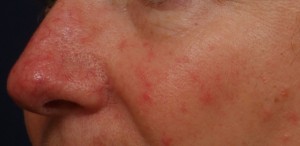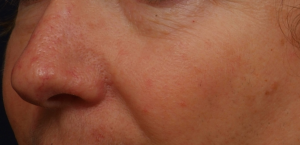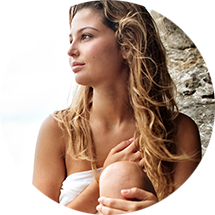Rosacea FAQs – Rosacea Awareness Month
What is Rosacea?
Rosacea is a common skin disease. It may begins with a tendency to blush or flush more easily than other people, and gradually progress to chronic redness. The redness can slowly spread beyond the nose and cheeks to the forehead and chin. In some cases the eyes may be affected, this is called Ocular Rosacea.
What does Rosacea look like?
Though rosacea is a benign disease, it can affect a person’s confidence and self-esteem. It can become unsightly and is often uncomfortable. The most common symptoms of rosacea are:
- Chronic redness, especially in the mid-face, cheeks and chin
- Broken or dilated blood vessels
- Pustules and flaky skin. The skin may be oily and acne prone.
- Red, irritated or swollen eyes. The eyes may feel “gritty.”
- Burning, tingling of the skin
- Enlarged pores, thickened skin. This often affects the nose and is called rhinophyma.
What causes Rosacea?
Rosacea most often affects middle-age and older adults. It is more common in women (particularly during menopause) than men. Although rosacea can develop in people of any skin color, it tends to occur most frequently and is most apparent in people with fair skin.
There are several factors that can cause your Rosacea to “flare up”. These factors include; heat (including hot baths), strenuous exercise, sunlight, wind, very cold temperatures, hot or spicy foods and drinks, alcohol consumption, menopause, emotional stress, long-term use of topical steroids on the face, and bacteria.
How is Rosacea treated?
The first step in treating your Rosacea is to avoid the things that trigger your flare ups. Good skincare is also important, mild cleansers and moisturizers should be used and it is important that you protect your skin from sun exposure and heat.
Topical treatments such as Finacea (azaleic acid) or Metronidazole may decrease the symptoms of Rosacea. Soolantra and Zilxi, newer topical creams has shown to reduce inflammation associated with rosacea. In some cases your dermatologist may prescribe an oral antibiotic to treat your Rosacea.
IPL (photofacial) or Pulsed dye lasers (such as Vbeam Perfecta) are popular treatments for Rosacea. They can reduce blood vessel formation, therefore reducing your facial redness and resolve broken blood vessels. Many patients see an appreciable difference in as few as one treatment. Once the blood vessel formation is diminished many patients find they are more comfortable and their flushing is less severe. Smooth beam laser is often used in conjunction with IPL or Vbeam to treat the acne component of your Rosacea. Smoothbeam reduces the overproduction of oil many Rosacea patients suffer with. It can also reduce pore size and improve the skin texture.
Below is a Rosacea case before and after one treatment of Vbeam:*


If you are affected by Rosacea it is important to remember that there are treatment options available to help your skin look and feel its best. Please contact our office if you are interested in learning more about your options.


